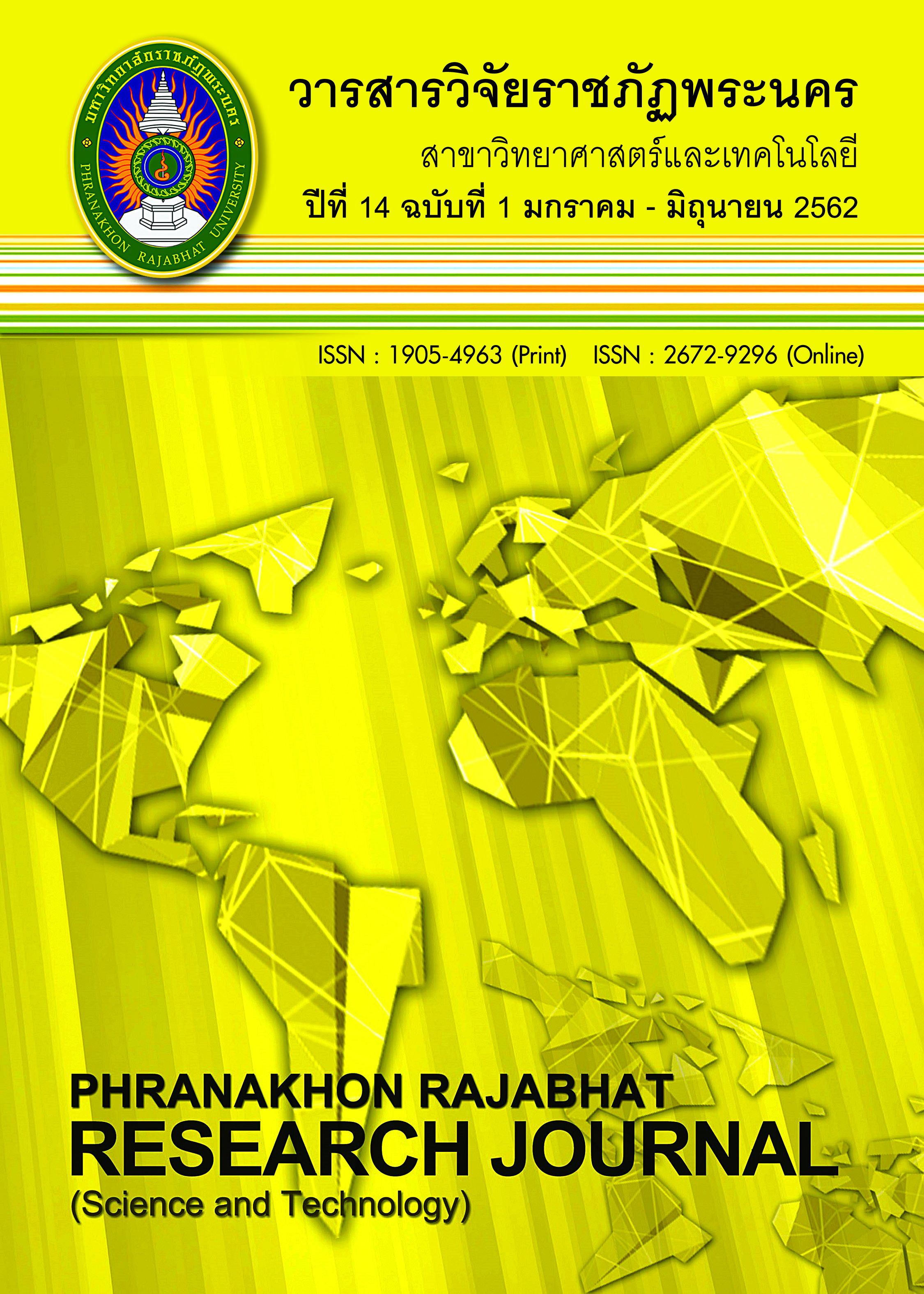THE PASTEURIZATION OF MILK APPLYING OHMIC HEATING IN COMPARISON WITH CONVENTIONAL METHOD AND THE QUALITY ATTRIBUTES OF LACTOSE-FREE MILK
Keywords:
free lactose milk, ohmic Heating, electrical conductivityAbstract
So far, there has been an increasing number of people with lactose intolerance reported in Thailand. The main objective was to determine the potential of applying ohmic method in the pasteurization of both normal and lactose-free milks. The lactose-free milk was prepared from the cow milk using lactase enzyme. The electrical conductivities of both normal and lactose-free milks obtained from various conditions
were measured applying ohmic heating apparatus. Furthermore, the chemical and physical properties of milk samples pasteurized at 63 °C for 30 min by conventional method and ohmic method were compared. It appeared that the electrical conductivities of milk samples were in the range of 0.635-1.230 S•m-1 indicating that they could be efficiently heated by ohmic method. Moreover, the electrical conductivities of normal
and lactose-free milks were insignificant different. There was no significant difference in aspects of protein content, total acidity and specific gravity between the milk samples pasteurized by conventional and ohmic methods. In summary, the ohmic method showed its potential for the milk pasteurization.
References
Science and Technology. 62, 104-112.
Daniel, S., Anne, W. & Robert, K. (2002). Lactose intolerance. American Family Physician. 66, 1845-1850.
Heaney R. (2013). Dairy intake, dietary adequacy, and lactose intolerance. Advances in Nutrition. 4, 151-156.
Kim, S. & Kang, D. (2005). Effect of milk fat content on the performance of Ohmic heating for inactivation Escherichia coli O157:H7, Salmonella enterica Serovar Typhimurium and Listeria monocytogenes. Journal of Applied Microbiol.
119, 475-486.
Laporte, M. & Paquin, J. (1999). Near-Infrared Analysis of Fat, Protein, and Casein in Cow's Milk. Journal of Agricultural and Food Chemistry. 47, 2600-2605.
Lyng, G. & McKenna, M. (2007). Dairy and Food Machinery. 2rd Edition. New York: Academic Press.
Palaniappian, S., Sastry, S.K. & Richer, E. R. (1992). Effects of electro conductive heat treatment and electrical pretreatment on thermal death kinetics of selected microorganism. Biotechnol. Bioeng. 39, 225-232.
Pereira, R., Martins, R.C. & Vincente, A. (2008). Goat milk free fatty acid characterixation during conventional and ohmic heating pasteurization. Journal of Dairy Science. 91, 2925-2937.
Shivmurti, S., Harshit, P., Rinkita, P. & Smit, P. (2014). Comparison of chemical properties of milk when conventionally and ohmically heated. International Food Research Journal. 21.
Sun, H., Kawamura, S., Himoto, J, -i., Ioth, K., Wada, T. & Kimura, T. (2011). Effects of ohmic heating on microbial counts and denaturation of protein in milk. Food Science and Technology Research. 14. 117-123.
Thoh, D., Pakdeechanuan, P. & Chanjula, P. (2017). Effect of supplementary glycerin on milk composition and heat stability in dairy goats. Asian-Australasian Journal of Animal sciences. 30, 1711-1717.
Tumpanuvatr, T., Jittanit, W., Keawchutong, S, Jan-Ob, O., Pham, H. & Sajjaanantakul, T. (2015). Comparison Between Ohmic and Conventional Heating of Pineapple and Longan in Sucrose Solution. Kasetsart Journal. (Natural.Science.).
49, 615-625.
Yoon, S., Yung, C., Lee, K., & Lee, C.H. (2002). Leakage of cellular materials from Saccharomyces cerevisiae. Journal Microbiology Biotechnology. 12, 183-188
Downloads
Published
Issue
Section
License
โปรดกรอกเอกสารและลงนาม "หนังสือรับรองให้ตีพิมพ์บทความในวารสารวิจัยมหาวิทยาลัยราชภัฏพระนคร สาขาวิทยาศาสตร์และเทคโนโลยี" ก่อนการตีพิมพ์



